Technology Project
MikroDent
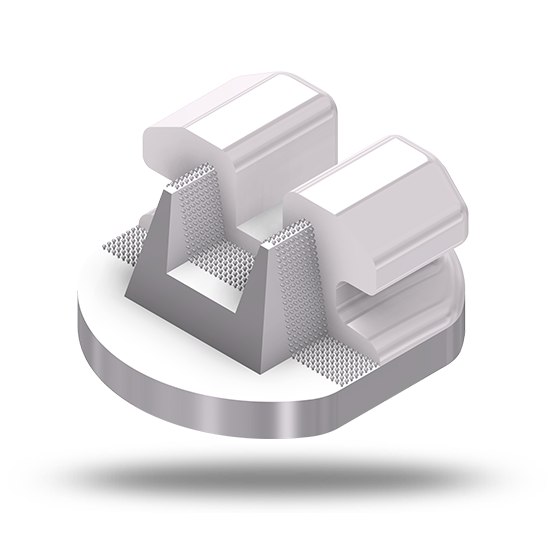
Objective:
Development of a complete process chain for the production of plastic-metal hybrid components using additive-generatively produced structures on a metallic joining partner
Partners:

Duration: 01.10.2018 - 30.09.2020
Main objective
The development of plastic-metal hybrid components using additive-generatively produced structures on a metallic joining partner for use in orthodontics, which combine the mechanical and physical advantages of a metallic core material with a bioinert, aesthetic and antimicrobial surface.
conventional treatment methods
Up to now, fixed orthodontic therapy has mainly used monolithic treatment appliances made of a single material. Orthodontic brackets consist of either metal, ceramic or plastic. Metal brackets made of stainless steel are characterized by good mechanical properties, are easy to remove and inexpensive to produce. Their plaque retention and poor aesthetics are disadvantageous. Due to increasing aesthetic demands, brackets made of other, more aesthetic materials such as plastic or ceramics are increasingly being used (see Figure 1). However, brackets made of plastic are now rarely used due to their swellability, poor mechanical properties and high plaque adhesion. Ceramic brackets also exhibit high aesthetics in combination with low plaque adhesion, but are difficult to remove and have high friction values. Ceramic brackets are therefore often provided with metallic components to improve their mechanical properties. However, this in turn results in poorer aesthetics and higher plaque adhesion. Increased plaque accumulation around the brackets increases the risk of demineralization and thus the caries risk.
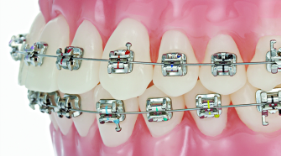

Figure 1: Comparison of the aesthetics of metal brackets with uncoated arches (left) versus ceramic brackets with coated arches (right).
In combination with the brackets described above, different wire arches are used, which are made of titanium, nickel-titanium alloys or steel, among others. At the beginning of a fixed orthodontic therapy, mainly superelastic arches with varying degrees of nickel are used. However, the nickel ions released from them have an allergenic potential and can cause an allergic reaction. In order to prevent this, arches are modified with various coatings, such as Teflon, epoxy resin, rhodium, polymer, polyester or polyamide. However, these surface modifications can have a negative influence on the mechanical properties of the sheet (friction behaviour, restoring forces), usually show only low resistance in the oral environment and the coating is often lost due to peeling (see Figure 2).
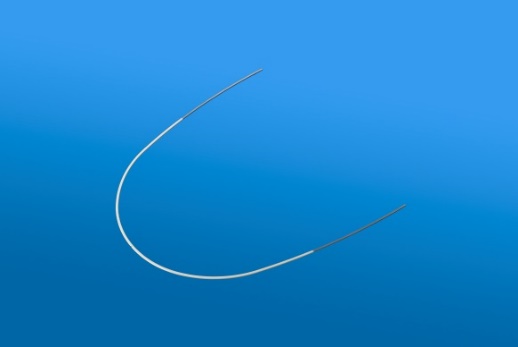
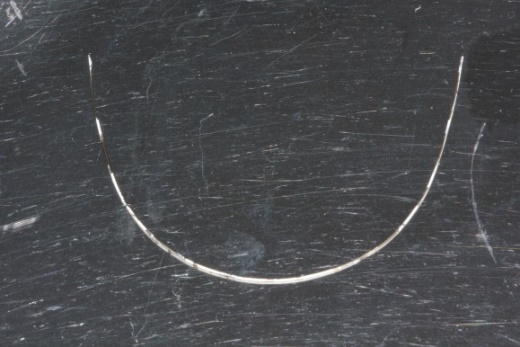
Figure 2: Coated sheet before (left) and after (right) clinical application.
Aspired solution approach
To date, there is no treatment agent available on the market that satisfactorily meets all requirements. It is therefore desirable to infiltrate the surface of a metallic core component by means of a plastic coating in order to combine the respective material advantages. The aim is to generate a composite material which, in addition to the required mechanical and physical properties, also meets aesthetic demands and at the same time has antimicrobial properties.
The transition from the classic monolithic component to a mixed construction method using foreign materials poses great challenges. This requires a joining process that can permanently and robustly join such different materials. High demands are placed on hybrid components in the field of orthodontics with regard to mechanical resistance, load capacity, temperature changes (temperature differences during food intake compared to body temperature) and biocompatibility. With most materials, the bond is separated due to the mechanical effects of food, chewing forces or brushing teeth.
By means of laser powder cladding, surface structures are to be created on a metallic joining partner, which allow an optimal infiltration with plastic materials in order to generate a durable bond. The aim is to produce high-strength, metallic treatment agents with an adhesive, aesthetic and antimicrobial plastic coating. The generated composite material should have a lifetime of at least 8 weeks in the oral environment and withstand the mechanical and thermal stress scenarios in the oral environment. At the same time it should have an antimicrobial potential to minimize the caries risk during fixed orthodontic therapy.
Manufacturing of demonstrators
In the present project three demonstrators for the dental field are designed, which have a bioinert, aesthetic and antimicrobial surface without negatively influencing the mechanical and physical properties of the core material. In particular, orthodontic brackets (see Figure 3) and arches (Figure 4) are to be provided with 3D generated surface structures and finished with an adherent plastic coating. In addition, the surface of bracket clips (see Figure 5) is to be modified so that infiltration with plastic is also possible to create the plastic-metal hybrid composite described above.
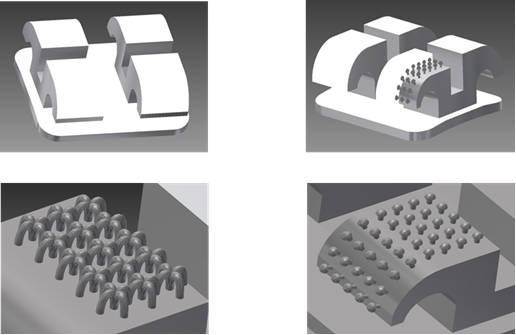
Figure 3: Metal bracket (grey) with plastic coating (white) with additive-generated, metallic surface structures of different geometry.

Figure 4: Orthodontic arch made of steel (grey) with plastic infiltrate (white) with additive-generated, metallic interlocking structures.

Figure 5: Bracket with 3D generated bracket clip.
Within the framework of this project, the system technology and control for laser powder cladding is to be further developed in such a way that it is possible to produce ultra-fine grid- or labyrinth-shaped structures with wall thicknesses between 50-200 µm. As the powder utilization in the welding process has been decreasing considerably with smaller structures, it is to be increased from 10% to 20%. The order rate is to be doubled by the end of the project by means of system-related adjustments compared to the state of the art using the example of one or more geometries to be defined as a benchmark. The 3D generated structures are to be completely infiltrated by liquid plastic in the subsequent joining process.
Subsequently, material-specific tests as well as dynamic and static end user tests are to be carried out with the manufactured plastic-metal hybrid components. With a view to clinical applications, the standards for bracket and arch dimensions with regard to the required precision and the specifications according to CE and MPG (Medical Products Law) with regard to biocompatibility are to be fulfilled.